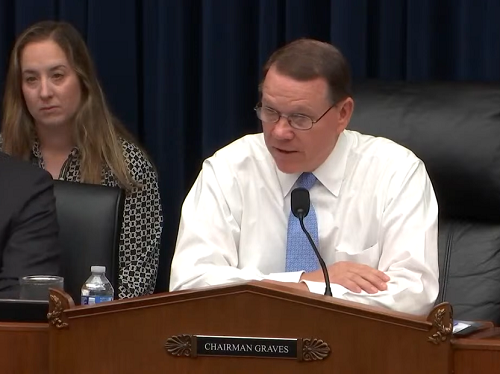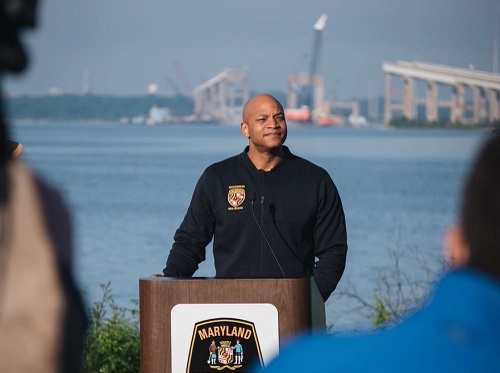Salvage teams recently removed the container ship M/V Dali from the site where it struck and collapsed the Francis Scott Key Bridge outside Baltimore on March 26.
[Above photo by the U.S. Army Corps of Engineers]
According to a 24-page preliminary report issued by National Transportation Safety Board on May 14, the 947-foot-long Singapore-flagged Dali first lost electrical power and propulsion capability and then struck the southern pier supporting the central truss spans of the Francis Scott Key Bridge.
A portion of the bridge subsequently collapsed into the river, with portions of the deck and the truss spans collapsing onto the vessel’s forward deck.
After over a month of debris removal work, the Key Bridge Response Unified Command – comprised of the U.S. Coast Guard, U.S. Army Corps of Engineers, the Maryland Department of the Environment, the Maryland Transportation Authority (a division of the Maryland Department of Transportation), and the Maryland State Police – refloated the Dali on May 20. With the assistance of five tugboats and other support vessels, the Dali was then towed and pushed 2.5 miles to a local marine terminal.

[Editor’s note: The House of Representatives Committee on Transportation and Infrastructure held a hearing on May 15 to review and examine the federal response to the Francis Scott Key Bridge collapse, subsequent recovery operations, and fiscal concerns regarding that ongoing work.]
The removal of the Dali now allows deep-draft commercial vessels to enter and exit the Port of Baltimore, as the operational width of the main port channel – where bridge debris is still being removed – will soon be 400 feet wide to a depth of 50 feet, the Unified Command noted in a statement.
The Unified Command added that salvage crews, using crane and barge assets already on site, will continue work to remove any remaining bridge wreckage until the federal channel is restored to its original width of 700 feet and all steel below the mudline is removed.

The Maryland Transportation Authority will continue to oversee the removal of the remaining steel and concrete outside of the federal channel, it added.
“We knew from the moment of the collapse that our mission to bring closure to the families, clear wreckage, move the ship, open the channel, and support all those affected would be remarkably complex and dangerous,” noted Maryland Governor Wes Moore (D) in a statement.
“Seven weeks later, we have recovered all six individuals who lost their lives [and] successfully refloated the Dali,” the governor said.
He added that, while this is “an enormous step forward” in the state’s mission to recover from the bridge collapse, the work isn’t done.
“We must continue to move in partnership with all key stakeholders – inside and outside of government – to clear the full 700 foot federal channel, support our people, including the workers, businesses, and families affected by the collapse, and rebuild the Francis Scott Key Bridge,” the governor noted.
 Nation
Nation
Registration Open for AASHTO’s Winter Rail Meeting
December 19, 2025 Nation
Nation

